Incredibly juicy, smoky and crispy-skinned, this rotisserie chicken is likely as good as it can get. With minimal preparation and some basic seasonings it requires little hands-on time but tastes like a gourmet dish.
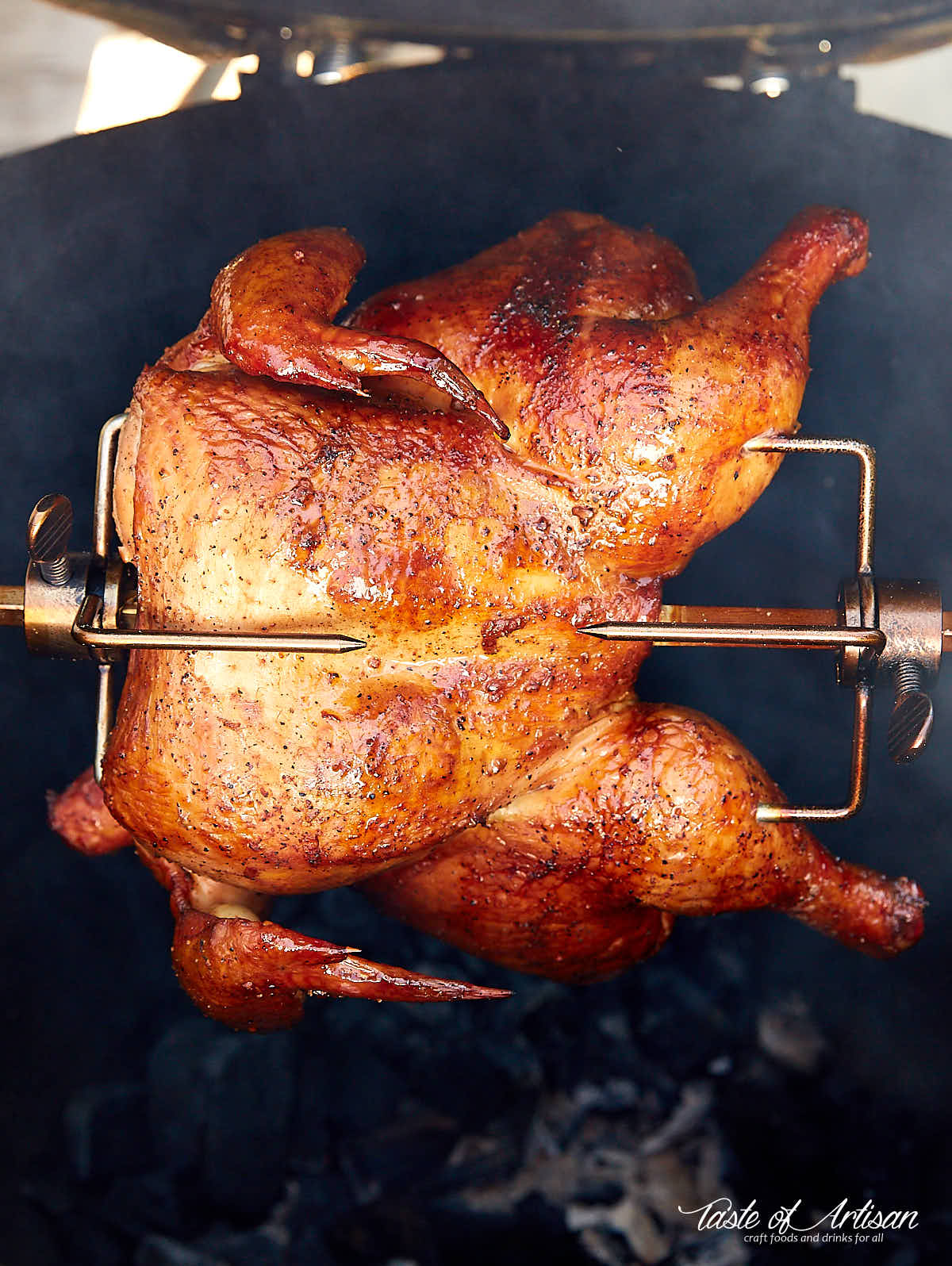
I look for three things in my rotisserie chicken:
- Tender and juicy meat
- Crispy skin
- Smoky flavor
Your typical store-bought rotisserie chicken won't give you that. The good news is that you can make a heck of a rotisserie chicken if you have a charcoal or a gas grill. I don't recommend using an electric rotisserie as, unfortunately, they don't provide the same results.
Rotisserie equipment
To cook chicken on a rotisserie you will need a rotisserie attachment for your grill. Luckily, there are dozens of those around these days.
If you have a Big Green Egg or a Kamado Joe, you best bet is Kamado Joe's JoeTisserie. They come in several sizes to accommodate the size of your grill. I've owned one for several years and love it. If you own a Weber charcoal grill, the Weber Charcoal Kettle Rotisserie is a great choice.
If you have a gas grill, look for a rotisserie attachment for your specific grill, like the Weber Gas Grill Rotisserie for their Genesis line gas grills. Depending on your grill and the ability to make some minor modifications, you can use a universal model like the OneGrill Rotisserie Kit.
Brining
Do you need to brine chicken before cooking it on a rotisserie? The short answer is 'no'. I've tried both ways and can hardly tell the difference. Chicken meat, like any other meat, starts to lose liquids at around 150F as meat fibers begin to contract. Brined or not, the meat will lose water. The secret to juicy meat in a rotisserie chicken is not brining. It's not overcooking the meat.
Dry rub
When roasting chicken over charcoal with a couple of wood chunks thrown in you will get amazing flavor just from the smoke. No special rub is needed here. Some salt and pepper is all that's really needed at a minimum. I like adding some onion and garlic powder. You can also add some ground rosemary or thyme, they always work great on rotisserie chicken. I also like adding some cayenne pepper.
If you like garlic, crust the chicken with some minced fresh garlic. The aroma you get from it is mind blowing. Garlic bits are prone to charring though especially when cooking at higher temperatures of 325F-350F. If you can liquefy it in a mortar it would solve that problem.
Using a drip pan
A lot of folks use a drip pan filled with water when cooking on a rotisserie. I don't. A drip pan creates steam that prevents smoke from properly adhering to chicken skin. A drip pan between the chicken and the heat source also hinders browning and the skin comes out less crispy. A drip pan may be useful on a gas grill though if you want to keep it clean.
Smoke
If using a charcoal grill, just throw in a few wood chunks to get a nice smoky flavor. My favorite wood to use on a rotisserie chicken is cherry, hickory and pecan. I find apple wood a little weak though many folks like to use it on chicken. You decide. On a gas grill you will need to use a smoke generator, such as the A-MAZE-N Pellet Smoker or the Wood Chip Smoker Box. I like the latter a bit more in this application.
Cooking temperature
I tend to cook my rotisserie chicken at about 300F at the spit level but often go for higher temperatures of 325F to 350F. You will get an even crispier skin but also more charring in some parts, more split skin and more oil rendered from skin. The cooking temperature, the size of the chicken and the distance to the heat source will determine the cooking time so make sure to have an instant read thermometer on hand.
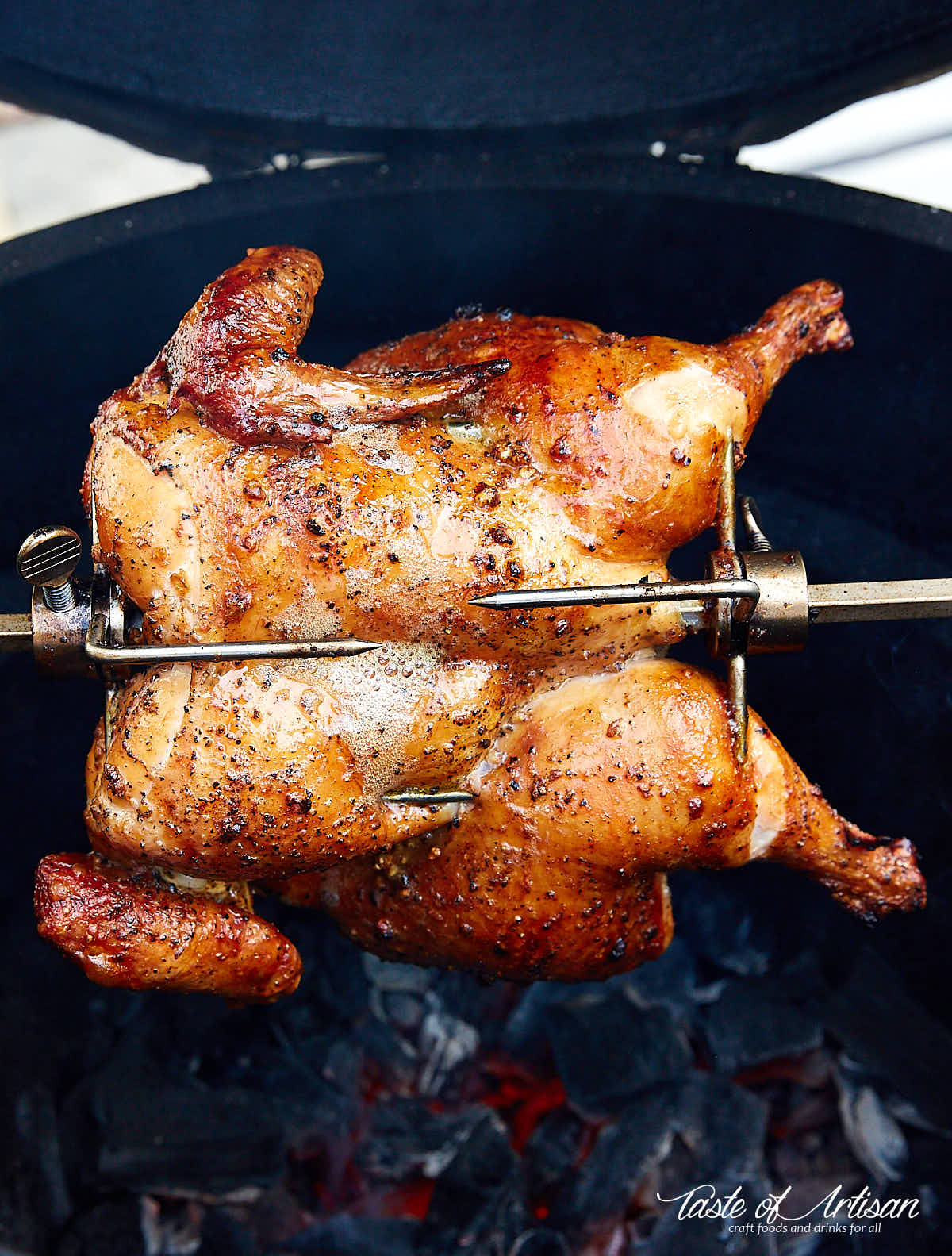
Ideal way to cook a whole chicken on a rotisserie
Cooking a whole chicken always poses a challenge. You want the legs and the wings to cook a little more so that they fall-off-the-bone tender. I like to cook those parts to 185F otherwise the meat is a bit tough and tastes under-cooked. The breasts, on the other hand, must be cooked to the recommended 165F.
So, how do you make a whole rotisserie chicken cooked such that you get legs, thighs and wings are cooked through without overcooking breasts? The secret is to butterfly or spatchcock the chicken and position it on the spit such that wings, thighs and legs get closer to fire than breasts, as shown on the pictures. By the time you get the breast cooked through, the legs and wings will be right where I want them to be. I find that butterflying also helps the chicken cook more evenly.
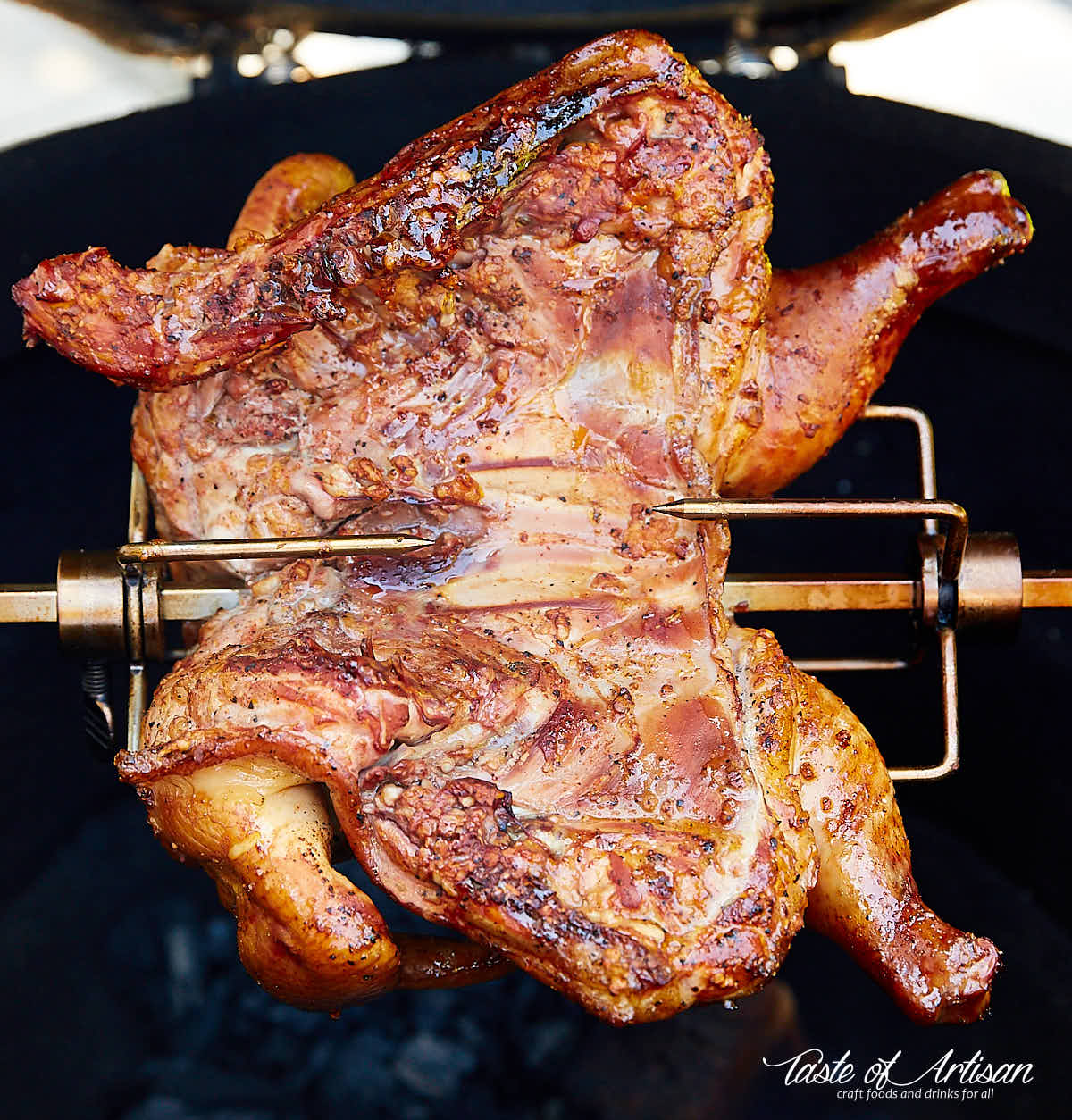
Serving Rotisserie Chicken
There are hundreds of great sides to serve with a rotisserie chicken. In summer, I like keeping my meals light and take advantage of in-season vegetables. Roasted vegetables are fantastic with thick chicken and so are summer salads like my favorite Heirloom Tomato Salad, Chili Mayo Cucumber Salad, or the Rustic Tomato and Cucumber Salad.
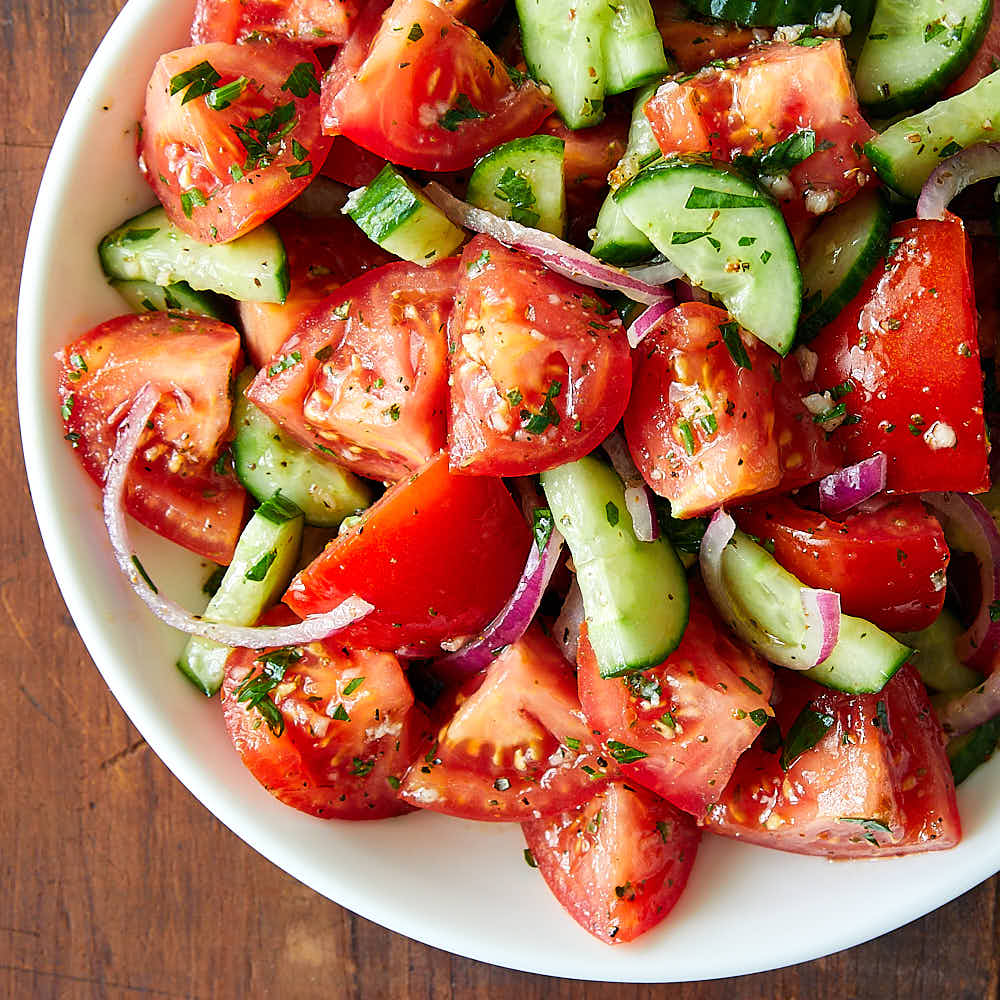
For a slightly more filling meal, go for a salad with plenty of carbs, like the Fusilli Pasta Salad, Mediterranean Quinoa Salad, Zesty Quinoa Salad, or Israeli Couscous Salad. Or Bread Salad (Panzanella). It's delicious.
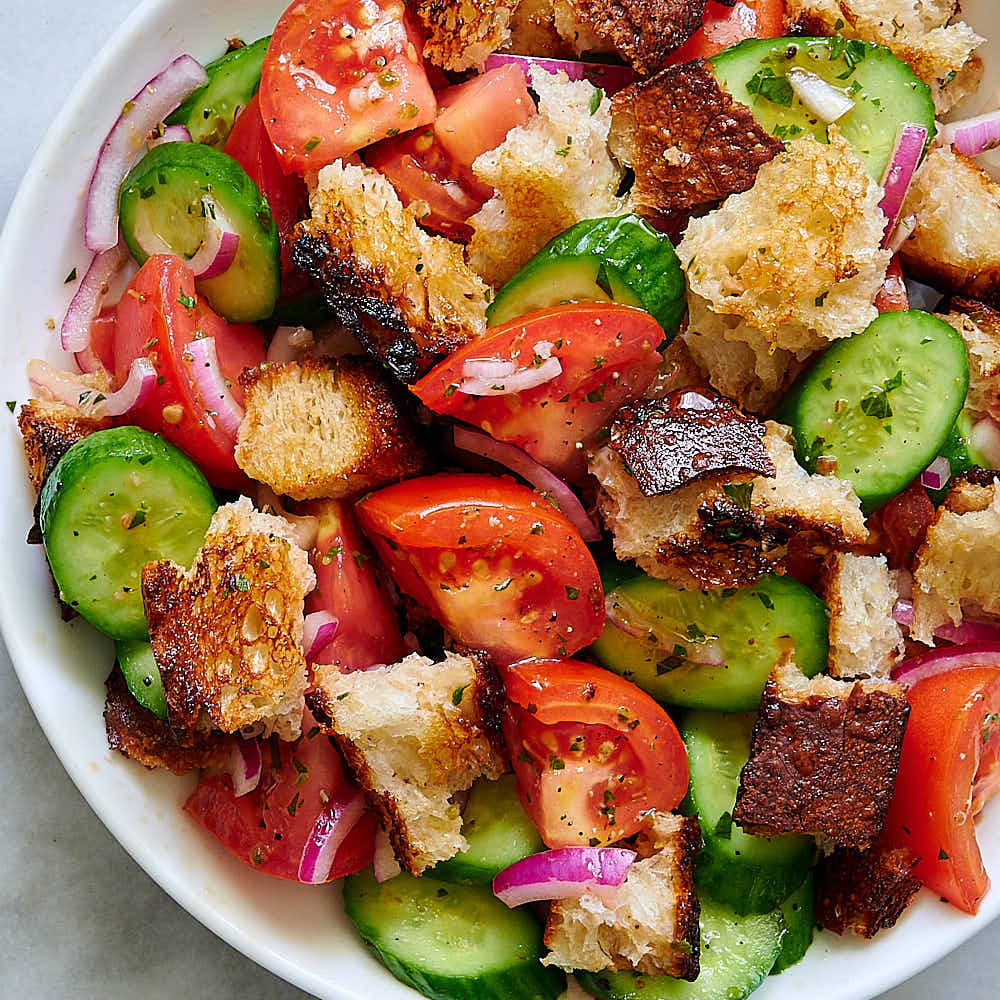
On colder days, serve this chicken with Southern Potato Salad, Garlic Mashed Red Potatoes, Truffle Fries, or Crunchy Air Fryer French Fries.
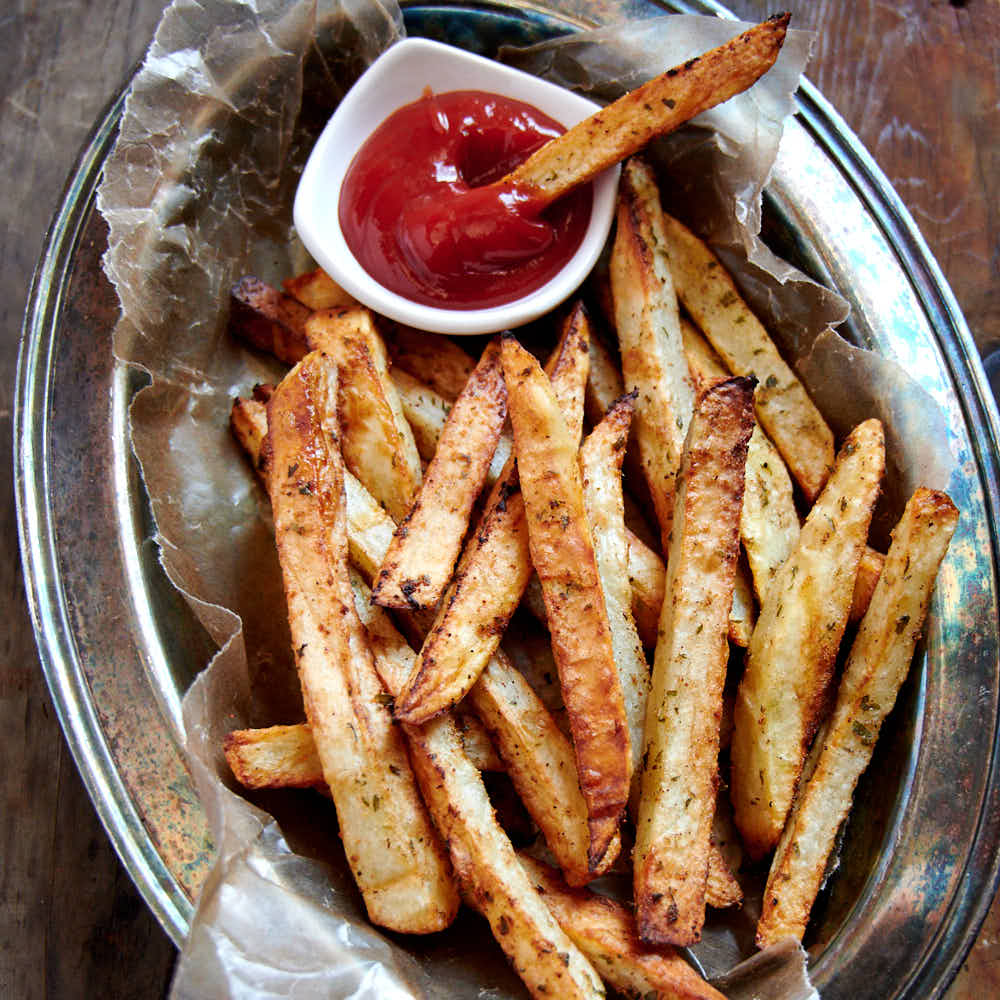
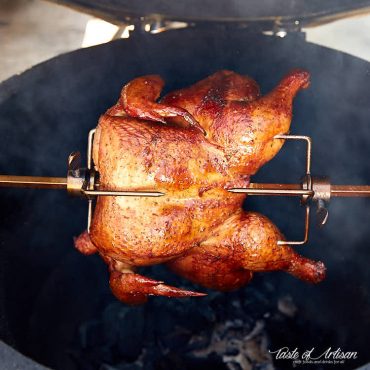
Ingredients
- 1 large roasting chicken butterflied
- 1 Tbsp olive oil
- 1 tsp kosher salt or sea salt
- 1 tsp garlic powder
- 1 tsp onion powder
- 1 tsp sweet paprika
- 1/2 tsp ground rosemary
- 1/4 tsp cayenne pepper
Instructions
- Rub the chicken with oil then sprinkle with the seasoning all over and pat down to make them stick. Set the chicken aside while you are preparing the rotisserie.
- Preheat the grill to about 300F at the spit level. Add some cherry wood chunks or chips for smoke.
- Place the chicken on the rotisserie spit and secure with forks. Place the spit on the grill. Start the motor and close the lid. Roast for about 60-75 minutes or until the chicken is cooked through.
Nutrition


Mary says
Hello and thanks for this great recipe. I was going to buy a new rotisserie for my elderly grill, but this recipe has convinced me to just go buy a new grill and rotisserie accessory. Yes. Go big or....go to Costco for chicken I guess. I do have a question, though: Have you done 2 chickens this way simultaneously? If you have, how did you accomplish that? Thanks in advance for any advice you can share. Happy summer. Mary
Victor @ Taste of Artisan says
Mary, I used to like Costco rotisserie chicken until ... I started to make my own. Let me tell you, it's a night and day difference. Don't get me wrong, Costco rotisserie chicken is good and can't be beat for the price, but once you try homemade, you immediately notice how much more flavorful it is... and that to-die-for crispy chicken skin... Costco rotisserie chicken is also very soft for some reason, almost like chicken made for babies... do they somehow tenderize it? With acid like lemon juice or buttermilk? I don't know, but I definitely like the homemade rotisserie chicken's texture a lot more.
No, I haven't made 2 chickens simultaneously on this grill because they won't fit on my large egg Joetisserie, but you may be able to do two on an XL Joetisserie. I have done two though, but I did it on my Cyprus BBQ rotisserie. Here is a picture of my Cyprus Rotisserie setup for two spatchcocked chickens:
https://tasteofartisan.com/wp-content/uploads/2024/07/rotisserie.jpg
Luke randolph says
How are you putting the rotisserie rod through the chicken after it's already spatchcocked? I don't understand how the rod goes through without destroying the chicken
Victor @ Taste of Artisan says
I have pictures of both sides in the pist above. I just gently push it throgh right next the backbone. Works well for me, nothing gets destroyed.
Matt says
Two questions --
On the Kamado Joe, have you tried placing one of the deflector plates towards the front, parallel to the rotisserie so the heat only hits the chicken on its way up while rotating?
Should the chicken be butterflied or spatchcocked, and either way, does that mean the "insides" (opposite the breast) are exposed to the heat as much as the skin?
Victor @ Taste of Artisan says
Matt, no, I haven't done what you described. Can I ask why you'd want to do that? I think it will extend the cooking time without any benefit that I can see.
I like cooking butterlied/spatchcocked chicken on a rotisserie. Yes, both the skin side, and the opposite (bone) side will be exposed to heat equally. There are several reasons for that. First - the chicken cooks faster. Second - it cooks much more evenly. There are no undercooked parts. Maybe it's just me, but when I rotisserie a whole (un-butterflied) chicken the parts close to the inside of the cavity taste rubbery and undercooked to me. I like chicken breasts at about 160F and the rest at about 185F. When cooking spatfchcocked chicken the parts cook such that by the time the breast get to 160F the rest are at 185F-190F. It comes out perfect every time. Tastes differ though, some may prefer to have their chicken cooked un-butterfiled.
Matt says
Thanks for your quick and thorough reply. I tried replying earlier but my phone wouldn't cooperate...
I had seen a method of cooking the rotisserie chicken on the Kamado Joe using one of the deflector plates to maintain a lower heat but allow some direct heat from the coals as the chicken rotated up, past the coals. As it turned out, I had to unexpectedly hurry up my cook so I removed the plate and cooked as you recommended. I also used a meater thermometer which is great for a rotisserie (when it works right). Long story short, it worked great and if I can attach it securely, I'll try it with a turkey for Thanksgiving.
One last thing -- I found it much easier to secure the spatchcocked chicken to the rotisserie than a whole one since I could lay it flat on the board and slide the prongs onto it without it trying to spin or fall unevenly around the rod. Thanks again.
Victor @ Taste of Artisan says
Hi Matt, you are absolutley correct, securing a spatchcocked chicken on a spit is much easier than a whole chicken.
I see no reason to use a deflector plate. I mean, you could if you want, there is more than one way to make a rotisserie chicken and if it works, it works. But for personally, I don't see why I would. I can just as well maintain a lower heat by adjusting the dampers and/or using a lower amount of charcoal. The biggest benefit of using direct heat all the way is that you get a perfectly crispy, beautifully browned skin. You can't get that if you limit the exposure to direct heat. Good luck with the turkey.
Al says
Victor, thanks for this recipe. Ok, I’ve done this method twice and both times it was perfect. The skin is crispy, the meat is juicy and it is completely cooked. No chance of any undercooked meat In the center if you follow the temp recommendations. I’m not the best at getting the chicken on the rotisserie forks so it flops around a little until the skin tightens up and then all is good. The temp is very forgiving. My gas grill fluctuated between 400 and 300 until I got it stabilized around 350. It’s a quick cook it 1 hr and 15 mins.
Victor @ Taste of Artisan says
Glad to hear that you liked it, Al. For me, whole chicken doesn't get better than this. Even my favorite whole smoked chicken is a close tie with this one. The crispy skin alone is worth all the effort. I remember back in the day - many years ago - we used to buy rotissery chicken from the store. I liked it a lot back then. Now - not anymore. It's just not up to par. I recall passing by Costco's rotisserie chicken a few weeks ago with my wife, it smelled really nice and was dirt cheap, as usual, their loss leader, but we both said - nah, let's make our own. You just don't want the store-bought one anymore even for cheap.
To prevent flopping around, what I found working for me is when I push the forks as close together as possible, and I make sure to put one tine into each leg and breast. Holds great that way.
Al says
Totally agree about Costco. Their rotisserie chickens never were to my liking as they are overly brined. Thanks for the tip on the forks. I also noticed that I had the short tines in the legs and breasts. I will switch it next time so the long tines are used for the legs and breasts.
Victor @ Taste of Artisan says
Good luck. Hope that works.
Matt says
Thanks much for the thorough answer. I had seen where one deflector plate was used to keep from burning the skin but still allowing some direct heat. Since it turns out I'm in an unexpected rush to get dinner ready, I just yanked out the plate and hoping for a timely, tasty bird.
By the way, I'm using a Meater probe for the temperature. It's often a pain, but really convenient for a rotisserie when it works right. Thanks again.
Victor @ Taste of Artisan says
You are welcome. Rotisserie chicken is one of our favorite foods and I make it probably 3-4 times a months, sometimes more often. I've never had burnt skin, that's the benefit of the meat rotating over direct heat. I've had chicken skin become very crispy when I cooked at higher temps, like 400F at the dome or about 375F at the spit level, but never burnt. OK, maybe the wing tips got a bit burnt, but that's the worst that I got. I actually like the very crispy skin but don't do it often as my family doesn't like it like that.
Tameka says
Is the cooking time the same for coal rotisseries that don’t have a lid?
Victor @ Taste of Artisan says
No, open rotisserie will take longer as a lot of heat escapes.
Archie says
Hello. Thanks for this recipe!
In the Kamado Joe do you place the coals towards the back? Or just have them evenly spread out in the basket? Any tips at all with the coal set up. Thanks
Victor @ Taste of Artisan says
Archie, I keep them evenly spread out. The amount of charcoal is fairly moderate.
Nigel says
Best chicken cook ever. Highly recommended.
Victor @ Taste of Artisan says
Enjoy!
XMC Polska says
Is it okay to post some of this on my site if I include a backlink to this page?
Victor @ Taste of Artisan says
Please do not copy and paste. Rewrite in your own words. You are welcome to re-use the photos but provide credits with a link to my blog.
Neil says
Man i love this system! I've done a lot of butterflied chicken on the weber kettle, but never tried them on the rotisserie! Works great - excellent way to get the thighs fully cooked without overdoing the breast. Took a few tries to get the forks in and set up without tumbling, but worth the effort!
Victor @ Taste of Artisan says
Hey, Neil, glad you liked it. I use this setup very often now. Outstanding results. I can't get the same beautifully crispy skin with any other method. And very true that breasts cook very well on rotisserie without drying out.
Kristi says
Any thoughts on cooking two butterflied chickens at the same time? I always rotisserie two birds because I have a large family and can always make use of leftovers. Generally it's not a problems to wedge the two whole birds together but I don't know when they are cut like this. If you've tried it I'd love to know!
Victor @ Taste of Artisan says
Hi Kristi, yes, you can do two birds at the same time. I tried that several times and it worked well. My family doesn't like it me doing that though as they like freshly cooked for its juiciness and crispy skin.
Charles Cokley says
I enjoy it
Victor @ Taste of Artisan says
Good to hear it Charles. Thanks for the feedback.
Phillip says
On a weber rotisserie grill, how do I setup the charcoals.
Victor @ Taste of Artisan says
Your setup will be similar to mine. What I do is light up a pile of charcoal, about half a chimney worth, let it get red hot, then spread them around the bottom of the grill. You can do the same in the chimney, it will be easier to do.
John says
What a difference butterflying the chicken made! A+++ recipe! Our chicken was devoured within 15 minutes and I am being asked to make more!
Victor @ Taste of Artisan says
Happy to hear that, John. Enjoy!
Cesar says
How do you setup the rotisserie “forks” on the butterflied chicken to hold it and not break apart during the cooking process?
Victor @ Taste of Artisan says
Cesar, take a closer look at the pictures, they will give you a pretty good idea. I insert the longer forks into breasts and legs/thighs. This works very well and I have yet to have a single chicken break apart.
Joel says
About how long did it take to get to the temps you wanted?
victor says
It usually takes about 45 to 60 minutes.
Michael says
Instead of soaking in brine solution, I have just applied salt all over the chicken and let it set open in the frige over night. Same results, less mess.
Gloria says
Wow! Your rotisserie chicken looks so delicious.
Thank you for the recipe.
victor says
You are very welcome!
Karyl | Karyl's Kulinary Krusade says
I haven't had rotisserie chicken in so long, and this is making my mouth water first thing in the morning!